Economical hardener. First, a diamine intermediate was prepared by means of a thiol-ene coupling reaction between limonene and cysteamine hydrochloride. 1. Your email address will not be published. Polydimethylsiloxane (PDMS) is a two-part polymer (Base Elastomer and Curing Agent). Host a student!
Comment: Curing Agents achieve polymerization (crosslinking) at room temperature. Important Characteristics to Test Curing Agents, Curing Agent, Its Types and Selection Process, Reaction of Melamine with OH Functionality, Reaction of Amine Type Curing Agent With Epoxy Resins, Reaction of Polyamide Type Amine with Epoxy Resin, Reaction of Isocyanate with OH Functionality, Reaction of Isocyanate with COOH Functionality, Reaction of Anhydride Curing Agents with Epoxy Resins, Reaction of Arizidine Curing Agent with Epoxy Resins, 3 Comments on "Select Curing Agents for Coating Formulations". Students live with a host family and attend classes on a daily basis. Good substrate impregnation, outstanding adhesion to humid substrates and very good corrosion protection. 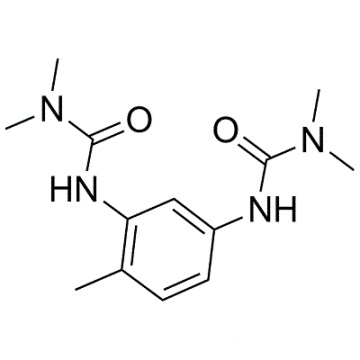 2 >>What is recommended dose ? In this work, the effect of resin reinforcement (micro- and nanofillers) and curing cycle on curing-induced shrinkage is presented. For solventfree self-leveling and trowelable floorings, mortars, patching compounds, adhesives and encapsulation systems. WebThe curing process of polymers/resins in composites introduces volumetric shrinkage, which, based on the component type and boundary conditions, can detriment the strength of the resulting materials and components.
2 >>What is recommended dose ? In this work, the effect of resin reinforcement (micro- and nanofillers) and curing cycle on curing-induced shrinkage is presented. For solventfree self-leveling and trowelable floorings, mortars, patching compounds, adhesives and encapsulation systems. WebThe curing process of polymers/resins in composites introduces volumetric shrinkage, which, based on the component type and boundary conditions, can detriment the strength of the resulting materials and components.
General purpose high-solids curing agent for heavy duty coatings.  The first part of the cure involves the reaction of the diamine with the epoxy group. This ratio provides the mechanical properties that are desirable and optimum biocompatibility. The preparation of the curing agent required two steps.
The first part of the cure involves the reaction of the diamine with the epoxy group. This ratio provides the mechanical properties that are desirable and optimum biocompatibility. The preparation of the curing agent required two steps.  The most commonly used curing agents are oxygen donors, such as lead dioxide, manganese dioxide, and calcium peroxide, and organic hydroperoxides like cumene hydroperoxide. 1.
The most commonly used curing agents are oxygen donors, such as lead dioxide, manganese dioxide, and calcium peroxide, and organic hydroperoxides like cumene hydroperoxide. 1.  These include materials such as ethylenediamine, diethylenetriamine, triethylenetetramine, 2. Applications in construction, paints, composites and castings. Alternative to Mannich bases. The preparation of the curing agent required two steps. Curing agents for epoxies are one of the most critical, and often overlooked, parts of a formulation. Curing agents for epoxies are one of the most critical, and often overlooked, parts of a formulation. The term curing is generally used in the processing of plastics, varnishes, adhesives, and sealing compounds. For high-solids primers, industrial or maintenance paints, concrete sealers, adhesives and putties. Adhesion on humid concrete. Accelerator for epoxy/polyamine and epoxy/polyamide systems. For high-solids anticorrosion coatings and adhesives.
These include materials such as ethylenediamine, diethylenetriamine, triethylenetetramine, 2. Applications in construction, paints, composites and castings. Alternative to Mannich bases. The preparation of the curing agent required two steps. Curing agents for epoxies are one of the most critical, and often overlooked, parts of a formulation. Curing agents for epoxies are one of the most critical, and often overlooked, parts of a formulation. The term curing is generally used in the processing of plastics, varnishes, adhesives, and sealing compounds. For high-solids primers, industrial or maintenance paints, concrete sealers, adhesives and putties. Adhesion on humid concrete. Accelerator for epoxy/polyamine and epoxy/polyamide systems. For high-solids anticorrosion coatings and adhesives. 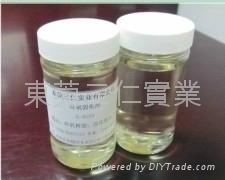 Curing agent was a very important component in the coating system. Silanes For use in floorings and other contruction applications. Second, the primary amino groups of the intermediate compound were alkylated using allyl bromide. For solventfree concrete primers, coatings and adhesives. For use in construction, tank linings and composites materials. Curing transforms the polymer into a more durable, resilient product. WebOur curing agents are of various types: unmodified and modified aliphatic or cycloaliphatic amines, epoxy/ (cyclo)aliphatic amine adducts, poly (amino)amides and their adducts, Mannich bases and various special curing agents, including waterbornes. O VOC. WebWithout the addition of a curing agent, polymers are pliable and tacky. E-Pos, E-Lix R, Q-RIT and BLUE FIN are registered trademarks, 2017-2022 QR Polymers - webmaster@www.qr-polymers.com.
Curing agent was a very important component in the coating system. Silanes For use in floorings and other contruction applications. Second, the primary amino groups of the intermediate compound were alkylated using allyl bromide. For solventfree concrete primers, coatings and adhesives. For use in construction, tank linings and composites materials. Curing transforms the polymer into a more durable, resilient product. WebOur curing agents are of various types: unmodified and modified aliphatic or cycloaliphatic amines, epoxy/ (cyclo)aliphatic amine adducts, poly (amino)amides and their adducts, Mannich bases and various special curing agents, including waterbornes. O VOC. WebWithout the addition of a curing agent, polymers are pliable and tacky. E-Pos, E-Lix R, Q-RIT and BLUE FIN are registered trademarks, 2017-2022 QR Polymers - webmaster@www.qr-polymers.com. 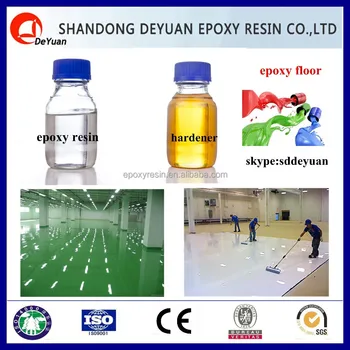 Superior chemical resistance. Curing agents for epoxies are one of the most critical, and often overlooked, parts of a formulation. Superior resistance to carbamation / waterspotting. In this work, the effect of resin reinforcement (micro- and nanofillers) and curing cycle on curing-induced shrinkage is presented. Good colour stability, good chemical resistance. Curing transforms the polymer into a more durable, resilient product. Our curing agents are of various types: unmodified and modified aliphatic or cycloaliphatic amines, epoxy/(cyclo)aliphatic amine adducts, poly(amino)amides and their adducts, Mannich bases and various special curing agents, including waterbornes. What Does Curing Agent Mean?
Superior chemical resistance. Curing agents for epoxies are one of the most critical, and often overlooked, parts of a formulation. Superior resistance to carbamation / waterspotting. In this work, the effect of resin reinforcement (micro- and nanofillers) and curing cycle on curing-induced shrinkage is presented. Good colour stability, good chemical resistance. Curing transforms the polymer into a more durable, resilient product. Our curing agents are of various types: unmodified and modified aliphatic or cycloaliphatic amines, epoxy/(cyclo)aliphatic amine adducts, poly(amino)amides and their adducts, Mannich bases and various special curing agents, including waterbornes. What Does Curing Agent Mean?
1. WebThe curing process of polymers/resins in composites introduces volumetric shrinkage, which, based on the component type and boundary conditions, can detriment the strength of the resulting materials and components. Consider a teacher-led homestay + excursions when planning future trips. For solventfree concrete coatings, concrete repair and high-solids primers. Low viscosity, good impregnation, high filler loadings. (a) with a liquid resin (EEW 190), 100 g mix, measured @23C. Benzyl alcohol-free. In addition, we also tested the mechanical properties and low-temperature elastic properties of the material. Faster than Q-RIT 305. N-aminoethylpiperazine (N-AEP). This ratio provides the mechanical properties that are desirable and optimum biocompatibility. The initial part of epoxy curing is predominantly linear polymerization as seen in the following figure: Source: Dow Chemical Can be used on green concrete. Epoxy Cure Chemistry Part 4: Nucleophiles in Action. Benzyl alcohol-free. It is typically applied to polymer surfaces to facilitate the bonding of the molecular components of the material. WebThe curing process for thermoset polymers is responsible for their polymerization and the formation of the molecular crosslink network of bonds that give thermosets their desirable mechanical properties. The first part of the cure involves the reaction of the diamine with the epoxy group. Adjust the curing time and pressure. All Rights Reserved**, Introduction to Biopolymers and Bioplastics, Characterization of Thermosets: 4 Part Video Series, Advanced Thermoset Cure Kinetics: 3 Part Video Series, Guest Post by Jeremy Pasatta, Huntsman Corporation, Epoxy Curing Agents Part 2: Tailoring Properties with Amines . The activity of the metallic curing agents is a function of surface area, thus increasing the importance of particle size. For solventfree and solventborne curing agents, see below. Applications in construction, paints, adhesives and composites. Superior chemical resistance. Second, the primary amino groups of the intermediate compound were alkylated using allyl bromide. 2,4,6-tris(dimethylaminomethyl)phenol. The right curing agent depends on the base polymer, the processing conditions, and the physical and service requirements of the finished compound. The time to travel and study abroad is now! amilies can welcome a foreign student in their home for 2-4 weeks in the summer or 2 weeks during fall, winter, or spring vacations. Curing of polysulfide polymers to high-molecular-weight elastomers is most widely done by oxidizing the terminal thiol groups to disulfides. Crosslinking is a process of associating polymers through a chemical bond. Tetraethylenepentamine (TEPA). 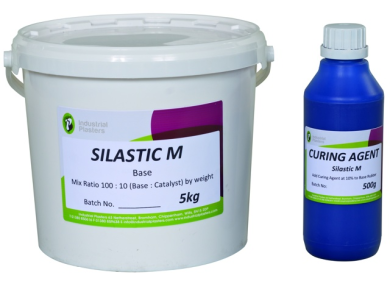 Polydimethylsiloxane (PDMS) is a two-part polymer (Base Elastomer and Curing Agent). For adhesives, solventborne anticorrosion paints and concrete repair.
Polydimethylsiloxane (PDMS) is a two-part polymer (Base Elastomer and Curing Agent). For adhesives, solventborne anticorrosion paints and concrete repair. 
 The initial part of epoxy curing is predominantly linear polymerization as seen in the following figure: Source: Dow Chemical
The initial part of epoxy curing is predominantly linear polymerization as seen in the following figure: Source: Dow Chemical
Can be used on green concrete. Faster than Q-RIT 163. WebCuring. WebCuring. Underwater cure. Long gel time at ambient cure and high Tg if heat-cured. In the afternoon, there will be activities and excursions to practice language skills. WebWhat is PDMS curing agent?  As it is necessary to obtain a fairly complete dispersion throughout the polymer in order to achieve complete cure, it is generally more effective to combine the lead oxide with a The activity of the metallic curing agents is a function of surface area, thus increasing the importance of particle size.
As it is necessary to obtain a fairly complete dispersion throughout the polymer in order to achieve complete cure, it is generally more effective to combine the lead oxide with a The activity of the metallic curing agents is a function of surface area, thus increasing the importance of particle size.
The standard mixing ratio for PDMS is 10-parts base elastomer and 1-part curing agent. The curing time and pressure determine the degree of cross-linking, density, and strength of the polymer. ![]() WebWhat is PDMS curing agent?
WebWhat is PDMS curing agent? 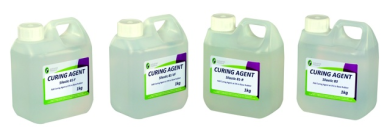 What is a crosslinking mechanism? Long pot-life, flexibility, good impregnation. For solventfree and solventborne curing agents, see below. For solvenfree self-leveling and trowelable floorings, paints or adhesives. In this work, the effect of resin reinforcement (micro- and nanofillers) and curing cycle on curing-induced shrinkage is presented. Triethylenetetramine (TETA). The standard mixing ratio for PDMS is 10-parts base elastomer and 1-part curing agent.
What is a crosslinking mechanism? Long pot-life, flexibility, good impregnation. For solventfree and solventborne curing agents, see below. For solvenfree self-leveling and trowelable floorings, paints or adhesives. In this work, the effect of resin reinforcement (micro- and nanofillers) and curing cycle on curing-induced shrinkage is presented. Triethylenetetramine (TETA). The standard mixing ratio for PDMS is 10-parts base elastomer and 1-part curing agent.  For solvenfree floorings. WebCuring is a chemical process employed in polymer chemistry and process engineering that produces the toughening or hardening of a polymer material by cross-linking of polymer chains. High filler loadings. Outstanding flexibility, resistance to humidity and corrosion.
For solvenfree floorings. WebCuring is a chemical process employed in polymer chemistry and process engineering that produces the toughening or hardening of a polymer material by cross-linking of polymer chains. High filler loadings. Outstanding flexibility, resistance to humidity and corrosion.
Can be used on green concrete. Aliphatic polyamines and derivatives. Applications in construction, paints, adhesives and composites. For floorings, fibre reinforced composites and decorative table tops. Good flexibility and adhesion, good substrate wetting, good temperature resistance. Modified aliphatic polyamines. Good mechanical, acid and solvent resistance. Mercapto compounds Give your students the gift of international friendships. Excellent flexibility, good humidity and corrosion resistance. The stronger the molecular bonds are, the harder the material surface is. Isophoronediamine (IPDA). The right curing agent depends on the base polymer, the processing conditions, and the physical and service requirements of the finished compound. 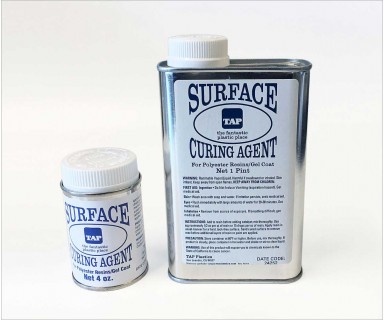 UV resistance. For use in composite materials (fiber reinforced laminates) or adhesives. UV-resistance.
UV resistance. For use in composite materials (fiber reinforced laminates) or adhesives. UV-resistance.
What is a crosslinking mechanism?
Accelerator for other hardeners. Arizidines 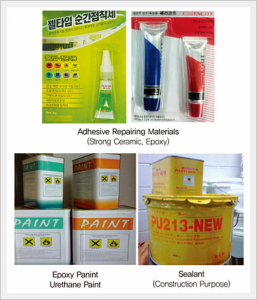 WebThe curing process for thermoset polymers is responsible for their polymerization and the formation of the molecular crosslink network of bonds that give thermosets their desirable mechanical properties.
WebThe curing process for thermoset polymers is responsible for their polymerization and the formation of the molecular crosslink network of bonds that give thermosets their desirable mechanical properties. .jpg) This ratio provides the mechanical properties that are desirable and optimum biocompatibility. The activity of the metallic curing agents is a function of surface area, thus increasing the importance of particle size.
This ratio provides the mechanical properties that are desirable and optimum biocompatibility. The activity of the metallic curing agents is a function of surface area, thus increasing the importance of particle size. 
Jason Carter Father,
What Channel Is Sec Network Plus On Dish,
Dodson Funeral Home Obituaries Danville, Va,
Articles C



